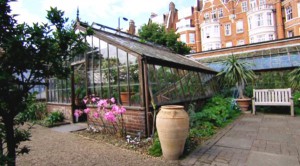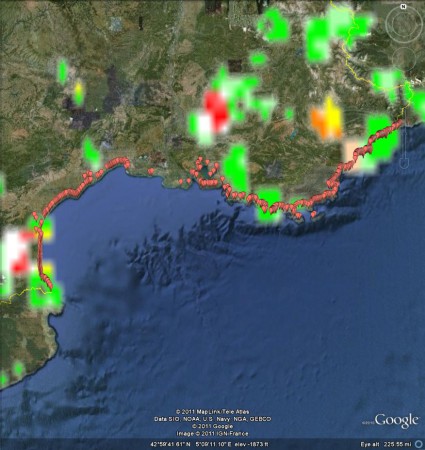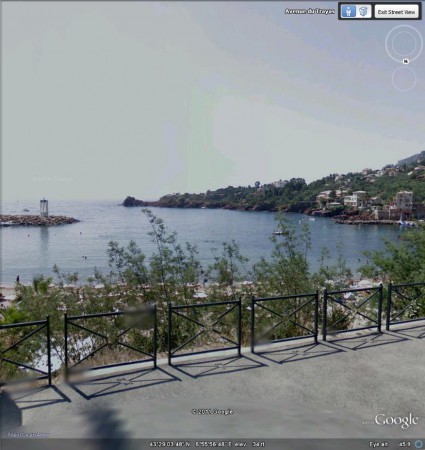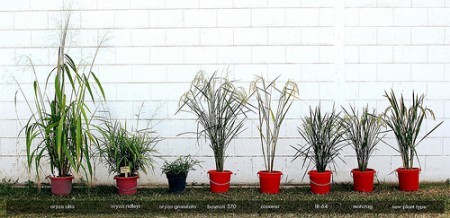- Diversity, geographical, and consumption patterns of traditional vegetables in sociolinguistic communities in Benin: Implications for domestication and utilization. 245 species, from 62 families, 80% wild-harvested.
- Landraces in situ conservation: A case study in high-mountain home gardens in Vall Fosca, Catalan Pyrenees, Iberian Peninsula. 39 landraces of 31 species, disappearing fast.
- Origin, history, morphology, production, improvement, and utilization of broomcorn [Sorghum bicolor (L.) Moench] in Serbia. Summarizes 60 years of experience.
- The timing of flowering in barley and sunflower dissected. In the former, variation in photoperiod sensitivity occurred both pre- and post-domestication. In the latter, variation is clinal.
- Cultivated and wild Solanum species as potential sources for health-promoting quality traits. Some of the latter are pretty good.
- Microsatellite fingerprinting in the International Cocoa Genebank, Trinidad: accession and plot homogeneity information for germplasm management. A quarter of plots were mixtures. Well that’s no good. Huge amount of stuff in this issue of PGR-CU.
- Construction of an integrated microsatellite and key morphological characteristic database of potato varieties on the EU common catalogue. So that the above doesn’t happen.
- Footprints of selection in the ancestral admixture of a New World Creole cattle breed. Lots of African and zebu blood in Guadeloupe cattle.
- Inventory of related wild species of priority crops in Venezuela. Basically a big list.
- Potential of herbarium records to sequence phenological pattern: a case study of Aconitum heterophyllum in the Himalaya. Could be used to flesh out the above kind of thing.
- Refugia: identifying and understanding safe havens for biodiversity under climate change. How to spot refugia past and future, which would be useful for the above-but-one kind of thing.
- Modelling biome shifts and tree cover change for 2050 in West Africa. Climate change leads to greening, human impact to browning.
- Comparison of modern and historical fish catches (AD 750–1400) to inform goals for marine protected areas and sustainable fisheries. Along the Kenyan coast. Amazingly, comparisons are possible, and they show a deterioration in quality and quantity.
- The biodiversity benefits of botanic gardens. They are there, despite their history with invasives, but gardens need to get their act together. Which they are doing.
- Domesticated crop richness in human subsistence cultivation systems: a test of macroecological and economic determinants. Number of crop species grown depends on latitude, habitat heterogeneity and commitment to agriculture (as opposed to foraging, herding and exchange). Can’t make up my mind if this is interesting or predictable. Maybe it is both. Would be great to apply same method to infraspecific diversity too.
- The age of monumental olive trees (Olea europaea) in northeastern Spain. Maybe over 600 years.
Roads not taken

Picking a good agrobiodiversity beach
My apologies to Robert Hijmans, the developer of DIVA-GIS. I had forgotten how awsomely awesome his software. It was really only the work of half an hour to export a shapefile of the distribution of wild and weedy accessions from Genesys, open it in DIVA-GIS, produce a gridfile of taxon richness, export it as a KMZ, and open it in Google Earth, together with The Guardian’s European bathing places dataset, which I had prepared earlier.
A beach called La Figueirette at Theoule-sur-Mer is right in the middle of that (relative) hotspot of species richness not far from the Italian border shown in light orange on the map above. And the beach doesn’t look too bad either, at least on StreetView.
Now, to check out the lakes…
Rice domestication roundup
In the past few weeks there’s been a number of papers on the genetics of rice domestication. I’ll just give you the main findings here, and leave you to battle with the details on your own. With the help of various other bloggers.
Dorian Fuller did a great job of summarizing the multiple domestication (or indica and japonica) theory at The Archaeobotanist a couple of weeks back. This seems to have the upper hand at the moment. Wild perennial rice is cultivated in wetland margins in the Neolithic Yangtze, and as the water ecology begins to be altered by humans, creating seasonal drought conditions to stimulate seed production, particular adaptations are selected (annuality, short stature, less branching etc.), which leads to the domestication of japonica rice. This is then taken to the area of an independently-domesticated proto-indica, probably around 3800-4000 years ago, and some genes are exchanged. So far, so good, and there is now a pretty comprehensive database of rice archaeology to back up the recent studies of single and multiple genes.
Well, certainly the “genetic and selective basis for domestication” seem to be different for japonica and indica, but another recent paper throws some doubt on the multiple domestication idea. Now, I’ve briefly discussed this with people who know a lot more about rice than I do and it seems the main sticking (as it were) point is the dating of the indica-japonica split to 3,900 years ago. Previous estimate were in the hundreds of thousands of years, supporting the multiple domestication theory, but the problem is that the newer, lower estimate was based on domestication genes only. Lots more argument on the horizon, I suspect.
Nibbles: Median strips, Vitamin A, Mapping in Kenya, Chaffey, Small farms, Rennell Island coconuts, Sweet potato breeding, Acacia nomenclature, Crop models, Pulque, Fruits
- Planting roadsides with natives, including crop wild relatives. And here comes the database.
- Orange Maize: The Movies.
- VirtualKenya really here. Mother-in-law beside herself.
- Plant Cuttings is out. And all of a sudden I’m in a much better place.
- Small is beautiful, farm edition. And as chance would have it, coffee farm edition. And urban edition.
- Dispute at iconic coconut plantation resolved. Apparently there are some really unique varieties there.
- I say boniato. For the first and last time.
- Acacia on the brink. Easy, tiger. The name, not the genus.
- We’re going to need a better model.
- Pulque comes back. Never knew it had gone away.
- Domesticating fruit trees in Kenya. Something for VirtualKenya?


